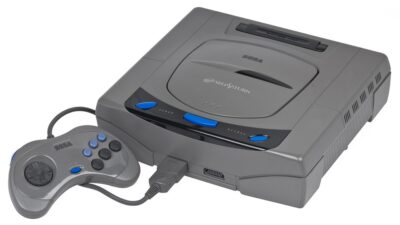The Steam Deck revolutionized handheld gaming by bringing PC gaming to a portable format. As powerful as it is versatile, the device allows players to enjoy their favorite titles on-the-go. However, to make the most out of your Steam Deck, it’s essential to optimize its settings and performance. Here are some tips and tricks to enhance your gaming experience.
1. Understanding the Hardware
Before diving into optimization, it’s crucial to understand what your Steam Deck is capable of:
- Processor & GPU: The Steam Deck is powered by a custom APU from AMD, combining a quad-core Zen 2 CPU with RDNA 2 graphics.
- Battery Life: Depending on the complexity of the game and settings, battery life can range from 2 to 8 hours. Managing performance can help extend this.
2. Adjusting Graphics Settings
Many PC games come with a range of graphics options that can affect performance. Here are some settings to tweak:
- Resolution: Lowering the resolution can significantly increase performance. Try 720p instead of 1080p for demanding games.
- Texture Quality: Opt for medium settings for textures—this keeps visuals decent while preventing lag.
- V-Sync & Frame Limiting: Enabling V-Sync will help prevent screen tearing. For battery conservation, consider setting a frame limit that matches the refresh rate.
3. Utilizing Game Mode
Steam Deck operates on SteamOS, which has a Game Mode specifically designed for optimizing the gaming experience:
- Quick Access Menu: Use the Quick Access Menu (press the Steam button) to quickly adjust performance settings, battery management options, and configurations without exiting your game.
- Per-Game Profiles: Customize performance settings for each game. Set specific CPU and GPU performance levels based on the game you’re playing.
4. Managing Storage Efficiently
With limited storage, managing your game library becomes crucial:
- Install External Storage: Use a microSD card for additional storage. Make sure to read speeds are fast enough to keep up with your gaming needs (UHS-1 or better).
- Use Steam Library Management: Regularly uninstall games you’re no longer playing to free up space.
5. Implementing Battery Saving Techniques
When gaming on the go, battery life is everything. Here are some strategies to prolong it:
- Enable Battery Saver Mode: This can be found in the Quick Access Menu. It optimizes performance for battery efficiency.
- Reduce Brightness: Lowering screen brightness can extend battery life significantly.
- Close Background Applications: Ensure no unnecessary apps or processes are running while gaming.
6. Customizing Controls and Interface
A tailored control scheme enhances gameplay:
- Configure Controller Settings: Customize button layouts and sensitivity in the Steam Input settings. This ensures better control, especially for genres like FPS or platformers.
- On-Screen Keyboard: Adjusting keyboard settings can enhance gameplay for games that require text input.
7. Performance Monitoring
Keep an eye on performance stats while gaming:
- FPS Overlay: Enable the built-in FPS counter to monitor performance in real-time. This will help you adjust settings on the fly.
- Temperature Monitoring: Tools like MangoHud can provide insights into system performance, including CPU/GPU temperatures, FPS, and usage stats.
8. Cooling Solutions
Overheating can throttle performance. Here are ways to manage heat:
- Ventilation: Ensure the Steam Deck is in a well-ventilated space while gaming. Avoid placing it on soft surfaces like blankets or cushions.
- Cooling Pads: Consider investing in cooling pads for longer gaming sessions, especially when playing resource-intensive titles.
9. Community Mods and Tools
The Steam Deck’s open architecture means players can tweak it further by:
- Linux Compatibility: Dive into ProtonDB for troubleshooting and optimizations for running Windows-exclusive titles through Proton.
- Community Mods: Explore community channels for mods that might enhance performance in specific games or improve visual fidelity.
10. Regular Software Updates
Finally, keep your Steam Deck updated:
- SteamOS Updates: Regular updates can bring performance enhancements and new features.
- Game Patches: Ensure games are up to date, as developers often release patches to optimize performance.
Conclusion
Optimizing your Steam Deck can significantly enhance your gaming experience, ensuring smooth, uninterrupted gameplay whether you’re at home or on the go. By tweaking graphics settings, managing performance, and keeping abreast of community developments, you can maximize every moment spent with your device. Make the most of your Steam Deck, and happy gaming!


